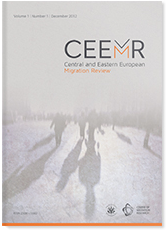The Invisible Immigrant Child in the Norwegian Classroom: Losing Sight of Polish Children’s Immigrant Status Through Unarticulated Differences and Behind Good Intentions
The Invisible Immigrant Child in the Norwegian Classroom: Losing Sight of Polish Children’s Immigrant Status Through Unarticulated Differences and Behind Good Intentions
Author(s): Randi WærdahlSubject(s): Social Sciences, Education, Sociology, Migration Studies
Published by: Ośrodek Badań nad Migracjami / Uniwersytet Warszawski
Keywords: school integration; home–school collaboration; egalitarianism; Polish–Norwegian migration; invisibility
Summary/Abstract: Poles are today the largest group of family immigrants to Norway. Since Polish immigration is an intra-European movement of labour, there are no specific laws or regulations, apart from labour regulations, pertaining to the introduction of Polish families to Norway and their settlement there. Consequently, there are few guidelines in schools and local authorities on dealing with Polish children in school. They receive the same introduction to school as immigrants from any other background, with no consideration of the specific characteristics of Poles. Equally, their parents are not eligible for the orientation courses and language classes that are offered to adult asylum seekers or refugees. As these are expensive, many Polish parents postpone language classes until they can afford them or find alternative ways of learning language and culture. In this article, I explore the inclusion of Polish children in Norwegian schools through the voices of teachers receiving Polish children in their classrooms and Polish mothers of children attending school in Norway. Interviews with both teachers and mothers reveal inadequate understandings of each other’s conceptions of school, education and the roles of home and school in the education of children. They also demonstrate a limited understanding of culturally bound interpretations of each other’s actions. Although both sides are committed to the idea of effective integration, we risk overlooking the social and academic challenges that Polish children face in Norwegian schools unless conceptions and expectations of school and education are articulated and actions are explained and contextualised. There is also a risk that cultural differences will be perceived as individual problems, while real individual problems may be overlooked due to poor communication between schools and families. The data is drawn from an extended case study including classroom observations, interviews with teachers and Polish mothers in Norway, and focus groups of educators and researchers in the field of social work.
Journal: Central and Eastern European Migration Review
- Issue Year: 5/2016
- Issue No: 1
- Page Range: 93-108
- Page Count: 16
- Language: English

